What is the difference between the three boosters?
2022-11-14
The core of steering is to generate additional power through the power assist device to help the driver complete the steering operation more easily. According to the different power assist devices, three types of mechanical hydraulic assist, electro-hydraulic assist and electronic assist have been gradually developed.
Mechanical hydraulic power assist appeared first, it is the use of the power of the engine to drive the steering oil pump, part of the engine power, into the pressure of the hydraulic pump, to provide auxiliary force for the steering system. Although mechanical hydraulic assistance is simple in structure and low cost, it also has many disadvantages. The oil in the system pipeline is always kept in a high pressure state, which not only consumes a lot of energy, but also has a long life; The lower the speed, the heavier the steering wheel will be, the higher the speed, and the steering system will become very sensitive; Most of the power source comes from the engine, and there is also a certain reduction in the power output of the engine
Electro-hydraulic assistance
The principle of electro-hydraulic power assist system is almost the same as mechanical hydraulics, the biggest difference is that the pressure source of the oil pump is no longer the engine, but the electric motor
Once the electronic system is added, the steering system becomes more intelligent, using the vehicle speed sensor to obtain vehicle speed information, and then dynamically changing the size of the oil pressure by changing the opening degree of the steering control valve, and finally realizing the adjustment of the power of the steering power.
Electric Power Assistance System (EPS)
The electric power assist system not only gets rid of the limitation of the steering oil pump, but also eliminates the need for the pulley installed on the engine to work mainly through the steering torque sensor to obtain the steering angle, and then transmit the driver's intention to the ECU, which adjusts the steering angle and power assist current of the motor according to the speed of the vehicle and the driver's steering angle. Since the electric assist eliminates many components, no subsequent maintenance is required.
Therefore, the current models are all electrically assisted steering systems
The only disadvantage of electronic assistance is that the road feedback needs to be fed back to the steering wheel through the motor, and the overall road feel and feel are not as good as hydraulic assistance
Mechanical hydraulic power assist appeared first, it is the use of the power of the engine to drive the steering oil pump, part of the engine power, into the pressure of the hydraulic pump, to provide auxiliary force for the steering system. Although mechanical hydraulic assistance is simple in structure and low cost, it also has many disadvantages. The oil in the system pipeline is always kept in a high pressure state, which not only consumes a lot of energy, but also has a long life; The lower the speed, the heavier the steering wheel will be, the higher the speed, and the steering system will become very sensitive; Most of the power source comes from the engine, and there is also a certain reduction in the power output of the engine
Electro-hydraulic assistance
The principle of electro-hydraulic power assist system is almost the same as mechanical hydraulics, the biggest difference is that the pressure source of the oil pump is no longer the engine, but the electric motor
Once the electronic system is added, the steering system becomes more intelligent, using the vehicle speed sensor to obtain vehicle speed information, and then dynamically changing the size of the oil pressure by changing the opening degree of the steering control valve, and finally realizing the adjustment of the power of the steering power.
Electric Power Assistance System (EPS)
The electric power assist system not only gets rid of the limitation of the steering oil pump, but also eliminates the need for the pulley installed on the engine to work mainly through the steering torque sensor to obtain the steering angle, and then transmit the driver's intention to the ECU, which adjusts the steering angle and power assist current of the motor according to the speed of the vehicle and the driver's steering angle. Since the electric assist eliminates many components, no subsequent maintenance is required.
Therefore, the current models are all electrically assisted steering systems
The only disadvantage of electronic assistance is that the road feedback needs to be fed back to the steering wheel through the motor, and the overall road feel and feel are not as good as hydraulic assistance
Previous:Brake pad limit test




